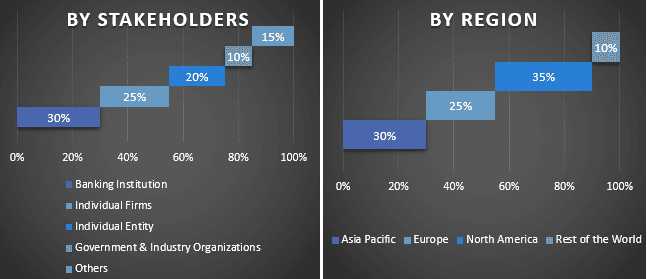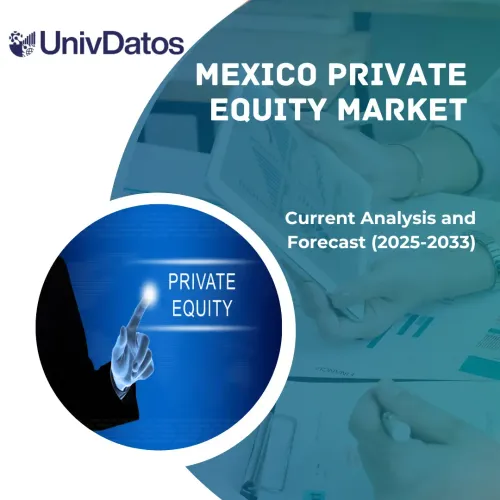- Home
- About Us
- Industry
- Services
- Reading
- Contact Us
Micro Lending Market: Current Analysis and Forecast (2022-2028)
Emphasis on the Provider (Banks, Non-Banking Financial Institutions, Micro-Finance Institutes, and Others); End-Users (Small Enterprise, Micro-Enterprise, and Solo Enterprise & Individual); and Region/Country

Global Micro-Lending Market is expected to grow at a significant rate of around 11% during the forecast period 2022-2028. Micro-lending is a way to issue small loans often known as micro-loans to the small business owner who may not have the access to a financial institution or financial product. The micro-lending system is supported by peer-to-peer lending digital capabilities which connect investors, borrowers, and lending platforms across the globe. In recent years micro-lending has witnessed unprecedented demand in the market due to the emerging economies, changing lifestyles, and lower risk & lower cost association in the micro-lending process. Moreover, the government of emerging economies promotes favorable policies for micro-lending operations. Additionally, the increasing number of entrepreneurs and the difficulty to access financial institutions are creating the opportunity for the micro-lending platform. However, the lower amount of loan and shorter duration of the repayment will hamper the market in the longer duration.
Accion International, StreetShares, Funding Circle, BlueVine Inc., Kabbage Inc, On Deck Capital, Fundera, Inc., Lendio, Kiva, and Lendr. are some of the key players in the market. Several M&As along with partnerships have been undertaken by these players to facilitate customers with innovative services.
Insights Presented in the Report
“Amongst providers, the micro-finance segment to hold a significant share in the market in 2020”
Based on the provider, the market is segmented into banks, non-banking financial institutions, micro-finance institutes, and others. The micro-finance segment holds a significant market share during the forecast period owing to the multifaceted nature of the financial service. Additionally, microfinance facilitates other alternative options such as risk pooling, money transmission, and investment from both collective and individual. Furthermore, micro-finance provides the option to lend money to low-income or unemployed individuals and groups who do not have the access to other financial institutions which will increase the demand for the micro-finance institute. However, the higher interest rate and lower period for repayment are hampering the micro-finance market.
“Amongst end-users, small enterprise category to witness robust CAGR during the forecast period”
Based on end-users, the market is categorized into small enterprise, micro-enterprise, and solo enterprise & individual. Amongst them, the small enterprise segment witnessed significant market growth in the year 2021 and is expected to remain the same during the forecast period owing to the increasing number of small businesses coupled with emerging economies across the world. However, the share for the solo enterprise & individuals will also register significant growth during the forecast period due to the growing number of entrepreneurs and increasing adoption of the micro-lending system among others for financial stability.
“Asia-Pacific to hold a significant share in the market”
In 2020, Asia-Pacific held a significant share of the global micro-lending market. This is mainly due to the emerging economies coupled with the growing number of small businesses and entrepreneurs in the region. Also, the growing digitization, mobile banking, and the growing popularity of e-wallets and mobile credit are playing a decisive role in driving the growth of the market. In addition, the favorable government policies for micro-lending in the region to support individuals, smaller businesses, and entrepreneurs are significantly supporting the market. For instance, on March 2022, RBI published a new guideline to provide the microfinance loan as a collateral-free loan for households comprising wives, husbands, and unmarried children with a yearly income of up to 3 lakhs which will open the opportunities for financial institutions as well as the individuals.
Reasons to buy this report:
- The study includes market sizing and forecasting analysis validated by authenticated key industry experts.
- The report presents a quick review of overall industry performance at one glance.
- The report covers an in-depth analysis of prominent industry peers with a primary focus on key business financials, product portfolio, expansion strategies, and recent developments.
- Detailed examination of drivers, restraints, key trends, and opportunities prevailing in the industry.
- The study comprehensively covers the market across different segments.
- Deep dive regional level analysis of the industry.
Customization Options:
The global micro-lending market can further be customized as per the requirement or any other market segment. Besides this, UMI understands that you may have your own business needs, hence feel free to connect with us to get a report that completely suits your requirements.
Table of Content
Research Methodology for the Micro-Lending Market Analysis (2021-2027)
Analyzing the historical market, estimating the current market, and forecasting the future market of the global micro-lending market were the three major steps undertaken to create and analyze the adoption of micro-lending in major regions globally. Exhaustive secondary research was conducted to collect the historical market numbers and estimate the current market size. Secondly, to validate these insights, numerous findings and assumptions were taken into consideration. Moreover, exhaustive primary interviews were also conducted, with industry experts across the value chain of the global micro-lending market. Post assumption and validation of market numbers through primary interviews, we employed a top-down/bottom-up approach to forecasting the complete market size. Thereafter, market breakdown and data triangulation methods were adopted to estimate and analyze the market size of segments and sub-segments of the industry pertains to. Detailed methodology is explained below:
Analysis of Historical Market Size
Step 1: In-Depth Study of Secondary Sources:
Detail secondary study was conducted to obtain the historical market size of the micro-lending market through company internal sources such as annual reports & financial statements, performance presentations, press releases, etc., and external sources including journals, news & articles, government publications, competitor publications, sector reports, third-party database, and other credible publications.
Step 2: Market Segmentation:
After obtaining the historical market size of the micro-lending market, we conducted a detailed secondary analysis to gather historical market insights and share for different segments & sub-segments for major regions. Major segments are included in the report as providers and end-users. Further country-level analyses were conducted to evaluate the overall adoption of testing models in that region.
Step 3: Factor Analysis:
After acquiring the historical market size of different segments and sub-segments, we conducted a detailed factor analysis to estimate the current market size of the micro-lending market. Further, we conducted factor analysis using dependent and independent variables such as various providers and end-users of micro-lending. A thorough analysis was conducted for demand and supply-side scenarios considering top partnerships, mergers and acquisitions, business expansion, and product launches in the micro-lending market sector across the globe.
Current Market Size Estimate & Forecast
Current Market Sizing: Based on actionable insights from the above 3 steps, we arrived at the current market size, key players in the global micro-lending market, and market shares of the segments. All the required percentage shares split, and market breakdowns were determined using the above-mentioned secondary approach and were verified through primary interviews.
Estimation & Forecasting: For market estimation and forecast, weights were assigned to different factors including drivers & trends, restraints, and opportunities available for the stakeholders. After analyzing these factors, relevant forecasting techniques i.e., the top-down/bottom-up approach were applied to arrive at the market forecast for 2028 for different segments and sub-segments across the major markets globally. The research methodology adopted to estimate the market size encompasses:
- The industry’s market size, in terms of revenue (USD) and the adoption rate of the micro-lending market across the major markets domestically
- All percentage shares, splits, and breakdowns of market segments and sub-segments
- Key players in the global micro-lending market in terms of products offered. Also, the growth strategies adopted by these players to compete in the fast-growing market
Market Size and Share Validation
Primary Research: In-depth interviews were conducted with the Key Opinion Leaders (KOLs) including Top Level Executives (CXO/VPs, Sales Head, Marketing Head, Operational Head, Regional Head, Country Head, etc.) across major regions. Primary research findings were then summarized, and statistical analysis was performed to prove the stated hypothesis. Inputs from primary research were consolidated with secondary findings, hence turning information into actionable insights.
Split of Primary Participants in Different Regions

Market Engineering
The data triangulation technique was employed to complete the overall market estimation and to arrive at precise statistical numbers for each segment and sub-segment of the global micro-lending market. Data was split into several segments & sub-segments post studying various parameters and trends in the areas of providers and end-users in the global micro-lending market.
The main objective of the Global Micro-Lending Market Study
The current & future market trends of the global micro-lending market were pinpointed in the study. Investors can gain strategic insights to base their discretion for investments on the qualitative and quantitative analysis performed in the study. Current and future market trends determined the overall attractiveness of the market at a regional level, providing a platform for the industrial participant to exploit the untapped market to benefit from a first-mover advantage. Other quantitative goals of the studies include:
- Analyze the current and forecast market size of the micro-lending market in terms of value (USD). Also, analyze the current and forecast market size of different segments and sub-segments
- Segments in the study include areas of providers and end-users.
- Define and analysis of the regulatory framework for the micro-lending
- Analyze the value chain involved with the presence of various intermediaries, along with analyzing customer and competitor behaviors of the industry.
- Analyze the current and forecast market size of the micro-lending market for the major region.
- Major countries of regions studied in the report include Asia Pacific, Europe, North America, and the Rest of the World.
- Company profiles of the micro-lending market and the growth strategies adopted by the market players to sustain in the fast-growing market
- Deep dive regional level analysis of the industry
Related Reports
Customers who bought this item also bought










